9. Spellbound (1945)
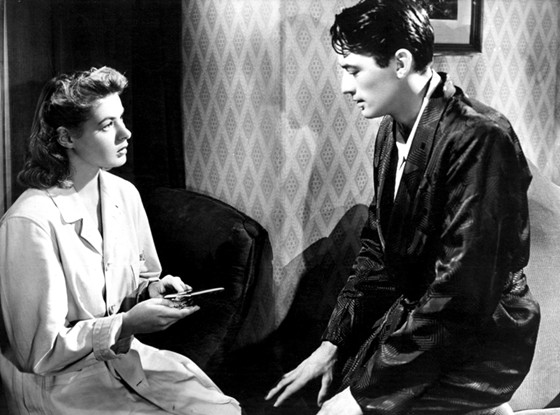
Having enjoyed a brief return home to England to produce two short films about the war, Aventure Mallache (a homage to France performed by members of the Théâtre Molière who had taken refuge in the UK) and Bon Voyage (a film about an English POW), Hitchcock returned to the States to commence work on his second film for David O. Selznik, with the producer once more attempting to wrestle creative control away from its illustrious director, taking control of the editing of the project and making wholesale changes to it.
Ultimately though, it wasn’t one of Hitch’s best efforts, though there are certainly some positive elements to it, primarily the performance from Ingrid Bergman, but there are some issues in regard to the Freudian theories upon which the entire concept is based.
The project was initially intended to be a reworking of Francis Beeding’s novel The House of Doctor Edwardes (the scenario penned with Bon Voyage co-writer Angus McPhail) which rather interestingly was going to be shot in equal parts colour and black and white depending on the sanity of the character whose viewpoint we are sharing.
Selznik, however, rejected the project for whatever reason and Hitchcock instead decided to create something else entirely; a project built around his leading lady – though this would ultimately swell enormously to result in three pictures that each examined various aspects of femininity.
The narrative concerns Bergman’s character, Constance, a reasoned methodical psychanalyst in an institution headed by Dr Murchison who is entering into retirement and being replaced by the younger Dr Edwardes.
Gregory Peck appears at the hospital, claiming to be the new psychiatrist, but also suffering from amnesia. He and Constance fall in love though it soon becomes quite apparent to her that he is a very troubled man. She sets to work attempting to unravel the mysteries of his mind and discovers that he is not the real Dr Edwardes at all, but rather he was skiing with him when he the “accident” that claimed his life took place.
This event closely resembled the death of his brother (another skiing accident) and this triggered a psychosis. Whilst predominantly a love story, there are certainly elements of the detective or thriller genres to be found here as Bergman unearths the truth about what happened to Dr Edwardes.
There is a beauty to Spellbound, seldom recognised as the experience comes across as something rather dry and disinteresting thanks to its focus on psychoanalysis as the driving force behind the narrative. The love of Peck’s Dr Edwardes allows Bergman’s Constance to embrace a femininity previously unseen in her, whilst she in turn heals his fractured psyche and empowers him to be his true self.
Naturally, this part of Hitchcock’s feminine trilogy was to focus on women as being nurturing and protective, and through it the characters together imbue only positivity in regards to the notion of love, creating an environment within which they can both grow and improve as people.
It’s a fascinating, if perhaps overly positive view of the subject matter, yet Hitchcock achieves this without so much as a hint of melodrama, and that surely is an achievement in and of itself.
8. Stage Fright (1950)
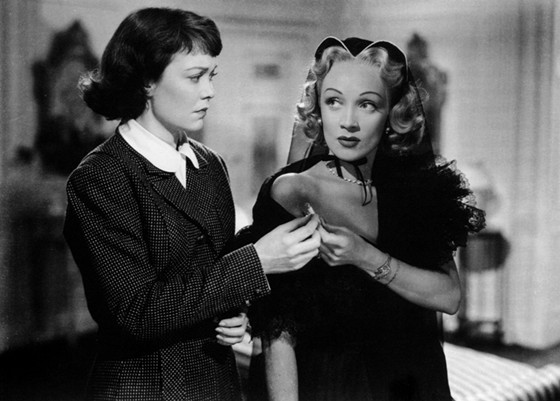
Created in the wake of the demise of the ill-fated Trans-Atlantic Pictures venture, this was the first of two films that Hitchcock made for Warner that would help him bounce back from the complete critical and commercial failure of Under Capricorn.
This new film was to be an adaption of Selwyn Jepson’s Man Running but differs somewhat, even changing the killer to be an entirely different character. The screenplay was penned by James Bridie, Whitfield Cook, Ranald MacDougall and Alma Reville, and whilst the basic story is actually rather mundane, there are a few concepts present within it that have been carried over from the brilliant Shadow of a Doubt.
Jonathan (Richard Todd) is an aspiring actor who has killed the husband of his lover, stage star Charlotte (Marlene Dietrich) and promptly gone on the run. Pleading his innocence to his childhood friend, Eve (Jane Wyman) – who also has a crush on him – he finds himself hidden within her parental home, as she sets off – disguised, of course – to enter the household of Charlotte and find out the truth.
Cunningly disguising herself as “Doris” she learns that Charlotte has been having an affair with her manager, the novel’s original killer, Freddie Williams. A trap is arranged for the actress at the venue where she is still performing her stage show and she admits to her part of the killing but reveals to Eve, and inadvertently to the police in the process, that it was Jonathan that actually performed the dee.
Like Uncle Charlie from Shadow of a Doubt, Jonathan makes an attempt on Eve’s life but is ultimately killed himself; he confronts her on the stage and discloses the truth about what happened, as he makes his move to bump her off (in an effort to avoid a murder charge with an insanity plea), she bolts and he gets killed by the iron safety curtain which falls on him.
The film is actually rather unfairly overlooked and criticised, perhaps predominantly because its narrative is neither particularly adventurous or tightly told, but it is a film full of cinematic wonder. Interestingly, it arrived in the same year as Kurosawa’s international break-out hit, Rashomon, and utilises a similar technique in selling a lie and then later exposing it for what it truly is – a technique that cinema goers abhorred.
When Jonathan relates his first version of events to Eve, he not only convinces her but the audience of his innocence due to the imagery that accompanies his monologue. At the end of the film, however, when we are shown the real turn of events, we are still shown the same footage with a different voice over that presents the events depicted on screen in an entirely different context – a continuation of Hitchcock’s expert use of subjective viewpoints from Suspicion.
In fact, Stage Fright is really the culmination of a decade long period of growth and cinematic experimentation for Hitchcock, featuring, as it does, the disarmingly charming face of evil, the beauty of innocence in a troubled, corruption filled world and the value of a mere glance or gesture in terms of story and character development.
Whilst the film will likely never find the mainstream acclaim that it deserves, it will forever be the perfect conclusion to Hitch’s first ten years in Hollywood, and a film that academicians will pore over until every drop of technique has been wrung out and thoroughly dissected, but that won’t likely happen for a very long time indeed.
7. Under Capricorn (1949)
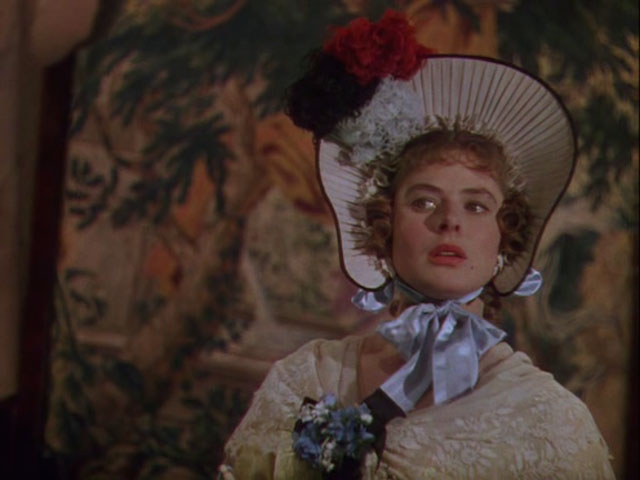
Following on from the technical and commercial success of Rope, Under Capricorn utilised some of the long takes of its predecessor – though only one used an entire roll of film, the magnificent nine-and-a-half-minute long confession scene at the film’s climax. This was the conclusion to the director’s trilogy of films exploring themes of femininity, and it featured at its core Hitch’s obsession with guilt and confession.
It is a film that is steeped in the literary tradition of France’s Honoré de Balzac with its keen eye for detail and depiction of upper class society, but backed up with the moral conscience of Fyodor Dostoyevsky (a trait that really started with Rope), making Under Capricorn an interesting piece that was much maligned by the critics and ignored by the public (it was to be Hitch’s biggest commercial failure).
Its predecessor, Rope, whilst being an attempt to recreate the pure experience of the theatre, still held within it some traces of the thriller genre, but here there are none, so could it possibly be that the view of Hitchcock as the “Master of Suspense” worked against him? Was he being pigeon holed by his enormous success in the field?
He was to return to success with his following two features for Warner, the first being Stage Fright in 1950, and then even more so with the film that was to be released the following year, Strangers on a Train. This effort, on the other hand, was to be something of an intelligent period piece.
Set in Australia in 1835, the governor’s nephew, Charles (Michael Wilding) has recently arrived from England (where the film was shot) and is invited into the home of Sam Fulsky (Joseph Cotten) and his wife, Lady Henrietta (a cousin of his).
The lady of the house, played with gusto by Bergman, is in a perpetual stupor – assisted by the house keeper – but Charles endeavours to cure her of this ill, and in the process of doing so falls in love with her. Sam begins to grow jealous of the new arrival and the progress that he is making with his wife, and in a similar plot point to Rebecca, the situation is made all the worse by the constant intimations of the house keeper.
This finally boils over into Sam making an outburst during a ball, the public humiliation of the evening acting as the catalyst and turning point for Henrietta who finally confesses to the murder of her brother – a crime for which her husband had previously shouldered the blame.
The film deals with the burden of guilt and the emancipation of confession with Bergman sacrificing her morals (perhaps her very soul) for her liberty by allowing her husband to take the blame for her wrongdoings.
The burden of that lie proving to be too much for her to bear, leaving her to find solace in alcoholism which ties into a secondary motif in the film which was identified by Eric Rohmer and Claude Chabrol in their ground-breaking study of the director’s work, that of disintegration.
Hitch believed in a connection between the mind and the body, where an illness in one affects the other. Lady Henrietta’s alcohol dependency is itself an extension, or metaphor, for the damage that her guilt infers upon her. Charles seeks to help Lady Henrietta and assist her in putting a stop to her drinking, though this cannot be done without having her face up to her guilt and the disintegration of her body as a reflection of her mind.
To achieve this, he literally forces Bergman to recognise her own reflection (trickier than it sounds as she has had all mirrors within the household removed) in a pane of glass, enabling her to witness her still profound beauty. Evidently, this allows her to see that the trade that she had made prior to the start of the movie is not quite as irreversible as she had once believed, which helps to embolden her to make the climactic confession that forms the lynchpin of the narrative.
It is a widely accepted fact that the performances in Under Capricorn are undoubtedly strong, but Bergman – despite claims that her mind was not entirely focused on the project – gives a real tour de force showing that might very well rank as her finest.
There are further parallels that can be drawn with Rebecca, the lengthy monologue scene for one, though here we never shy away from the face of the performer as she delivers her unburdening, cathartic speech.
As mentioned previously, there is also the meddling house keeper who attempts to take advantage of her mistress’ frayed nerves, here attempting to off her with a stunt involving a mummified head. Unknown to her, however, Lady Henrietta feigns her dramatic response and watches the woman as she collects the head and departs, Bergman’s face displaying a heady mixture of emotional responses as she does so.
6. Lifeboat (1943)
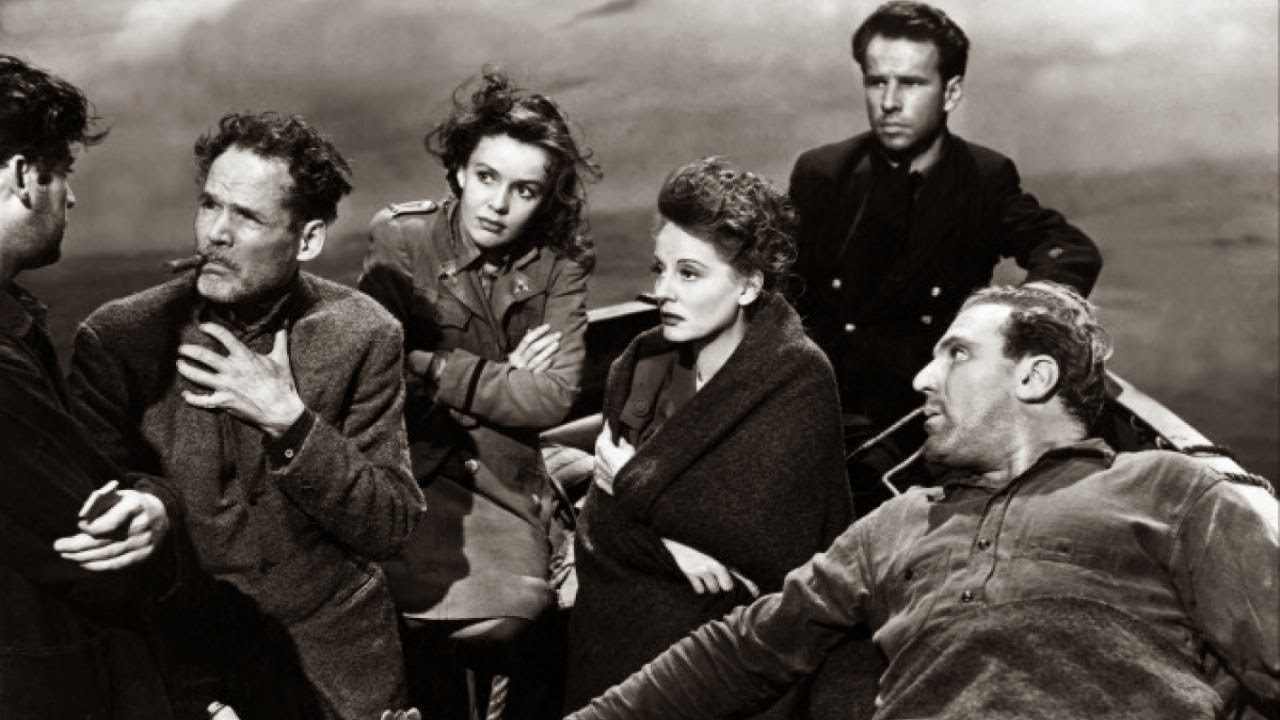
Another film made whilst out on loan, this time for 20th Century Fox, this project is one that stemmed from a basic concept that Hitch had and relayed to the famous writer John Steinbeck who worked it into a treatment, before then fleshing it out into a screenplay with the help of Ukranian writer Jo Swerling (Pennies from Heaven).
The setting sees a ragtag group of characters (all seemingly shallow stereotypes at the outset) forced together within the confined space of a lifeboat after the liner that they were all travelling on is sunk by a German U-boat.
The group then rescue a crewmember from that same submarine, it too having sank, and through his confidence and sense of purpose he effectively commandeers the boat and has them set sail for the nearest German encampment where he can find safety. Despite its war time setting, and inclusion of Nazis, Lifeboat isn’t an entirely politically motivated movie, but rather the tale that it seeks to weave and the questions that it poses are of a moral nature.
The German brings everyone to his side – at least temporarily – with just the sheer force of his will, making him a powerful metaphor for Hitler’s rise to power, and his ability to convince a nation to blindly follow him.
Naturally, in the film, the characters for all of their moralistic debates and values, end up murdering the sailor, prompting the viewer to ponder what goodness actually is and where it comes from.
Hitch was rightfully reticent to believe in wholly selfless acts, and this forms a great deal of Lifeboat’s true meaning. Sure, there’s certainly a degree of anti-Nazi intent here, but the underlying message is somewhat more existential in nature, telling us that we should not, and do not, have the right to judge others.
This message is brought well and truly to the fore at the end of the film when the survivors rescue another German sailor, this one initially pulls a gun on them before lowering it, allowing himself to be disarmed. The group are naturally taken aback at first and reticent to save the man, but having disarmed him, choose not to hold his actions against him and promptly pull him aboard anyway.
In regards to the first German we see though, the characters on the titular boat offer up their own views and opinions on what should be done, but in each case their reasoning belies their seemingly principled stance.
The Christian man who pleads that the sailor’s life be spared appears to be the voice of all that is good, yet it is still selfishness that guides his hand for he is motivated by fear; the German is the only survivor with any nautical experience and is therefore the best chance that he has to stay alive.
There is duplicity in all social interactions but society survives based on our collective ability to bury our true feelings and stay our hand in the interest of the greater good.
Hitchcock’s Lifeboat teeters on stormy water, it’s almost caricature-like crew deceitful, forgiving and self-sacrificing (as displayed by the journalist when she discards her most treasured possessions) to create a pastiche of society – the boat itself its metaphor. The common ground we share as tumultuous as the waves lapping at the side of the boat.
5. Suspicion (1941)
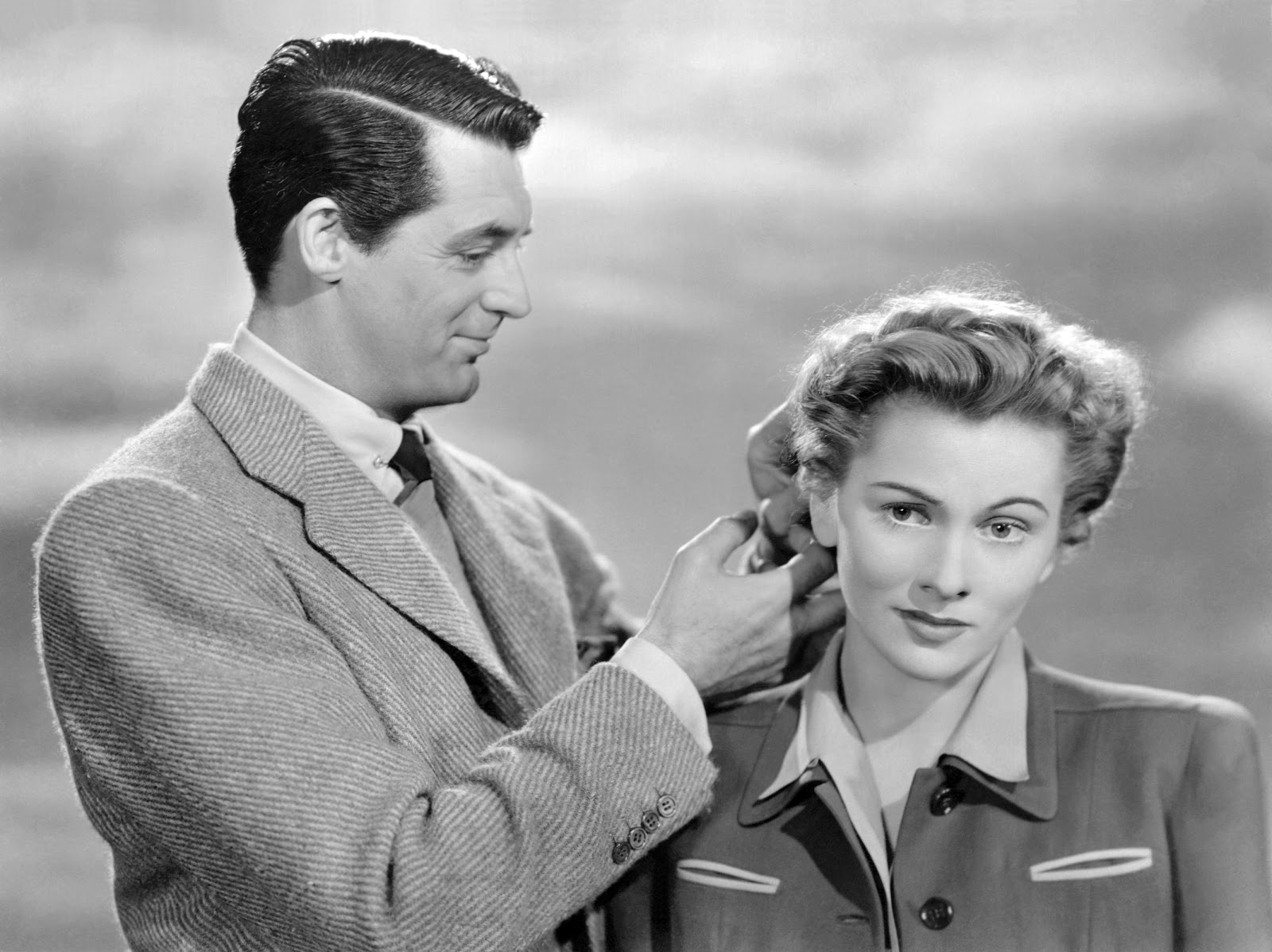
In 1941, Hitchcock created a new film with a screenplay written by Joan Harrison (Hitchcock’s assistant), Samson Raphaelson and Alma Reville that was based loosely on the Francis Iles novel Before the Fact.
He acted as Co-Producer on the venture allowing him a degree of creative freedom, which probably explains why it’s such a departure from the original source material in ways that Selznik would never have tolerated (hence why Rebecca did not deviate quite so much), though in truth it was not the first time in his career that he had done this.
Hitch’s screen translation of John Buchan’s The Thirty-Nine Steps saw the director and his co-writers strip away all of the fluff of the novel to keep only the elements that they wanted – and these, it must be said, were rather few and far between, making it an entirely different story.
Suspicion, likewise, was such a radical departure from the original source that it also weaves an entirely different tale; no longer was it just a throwaway chronicle concerning a woman who becomes an accomplice in her own murder – and willingly too – but rather a far more thoughtful tale that was concerned with the nature of suspicion and the damage that it can have upon a relationship.
In the book, it was the denouement that really held the whole thing together, whilst the film eschews the need for such a flimsy band aid. In this narrative, the shy Lina McLaidlaw (Joan Fontaine in another impressive outing) meets the handsome womaniser, Johnnie Aysgarth (Cary Grant) and the two abscond together and wed, against the wishes of her father.
Johnny, as it turns out, isn’t quite as fiscally responsible as she had believed him to be and for the most part, refuses to face up to his responsibilities. He loses a job that she finds for him, gambles his way into debt and sells off some of her family heirlooms to pay some back – all behind his new wife’s back. Things take a seedier turn, however, when Lina learns of his possible intent to murder her and cash in on her life insurance.
In the novel, it really was as simple as that, but in the film, things aren’t quite so black and white as Johnnie learns over the course of the film that he must face up to his liabilities, even accepting a legal punishment for his embezzling of funds from the company that had employed him.
There are some claims that Cary Grant’s character simply wasn’t allowed to be the killer that his wife believes him to be due to studio interference, but this just doesn’t seem to fit. The whole premise of the film is built upon his presumed guilt, but actual innocence.
Hitchcock masterfully shoots the film in two halves, the first from an objective point of view to show us the attractive couple in love in the early period of their marriage, and the second, subjectively, from Joan Fontaine’s viewpoint. Remarkably, without Cary Grant’s performance changing to make his character appear more sinister, he already does.
The famous poisoned milk section from the book being the culmination of that assumption, eerily lit with a light inside the glass of milk (the only light source as Grant ascends the staircase) to indicate that there is something just not quite right.
Unlike the novel, however, the untouched glass of milk exonerates him and the two are soon determined to face the future and whatever challenges that it might possess together, the only person Grant ever had any intention of killing was himself.